Headlights are an essential safety feature on every vehicle, providing visibility during nighttime driving and adverse weather conditions.
When a headlight bulb burns out, replacing it promptly is critical—not only for safety but also to avoid legal issues on the road. However, not all headlight bulb replacements are created equal.
Some vehicles make it incredibly easy to swap out bulbs in just a few minutes without needing tools, while others require complicated disassembly of parts such as bumpers, air boxes, or even parts of the engine bay.
Understanding the ease or difficulty of replacing headlight bulbs can save time, reduce frustration, and avoid unnecessary trips to the mechanic.
For many car owners, the prospect of headlight replacement can be intimidating if it involves dismantling components, whereas quick-access bulbs are ideal for DIY maintenance.
In this article, we explore five vehicles whose headlight bulbs can be changed in mere minutes, highlighting their user-friendly designs and accessible compartments.
Following that, we dive into five models where bulb replacement requires considerable disassembly, explaining the challenges and what owners should expect when servicing these headlights.
Whether you’re a DIY enthusiast or simply want to know what to expect when your headlight goes out, this guide will provide valuable insights to help you navigate the process efficiently.
Also Read: 5 Vehicles Where Tech Updates Are Free And 5 That Charge Subscription Fees
5 Headlight Bulbs You Can Change In Minutes
One of the most appreciated features in modern vehicles is the ease of maintenance, especially for common tasks like changing a headlight bulb.
For many drivers, being able to swap out a burnt bulb without calling a mechanic or spending hours under the hood is a huge convenience.
Manufacturers design some vehicles with quick-access headlight compartments that allow owners to replace bulbs in minutes using minimal tools—or none at all.
This user-friendly approach not only saves time but also lowers repair costs and empowers car owners to maintain their vehicles independently.
In this section, we highlight five vehicles where headlight bulb replacement is designed for simplicity.
These cars typically provide easy access through the engine bay or rear of the headlight housing, with clearly marked bulb covers, simple clips, and straightforward electrical connectors. Often, the design avoids removing other components like air filters, battery terminals, or bumpers, which can complicate the process.
Why focus on these models? Because they represent the practical side of car ownership, where convenience and straightforward design come first. For drivers who prefer DIY maintenance, these vehicles minimize hassle and encourage timely repairs.
Understanding which cars make headlight bulb replacement easy can help you make informed decisions when buying a vehicle or prepping for your next routine maintenance.
Now, let’s look closely at five cars that exemplify this user-friendly design philosophy, examining exactly why their bulb replacement process is quick and what owners can expect when it’s time to swap those headlights.
1. Toyota Corolla (2019–2023)
The Toyota Corolla has long been praised for its reliability and ease of maintenance, and its headlight bulb replacement is no exception.
From the 2019 model year onward, Corolla models feature a simple headlight assembly that offers direct access to the bulbs without requiring any disassembly of surrounding components.
Replacing the headlight bulb on these Corollas usually involves opening the hood and locating the rear access panel on the headlight housing. The panel is secured with a twist-lock cap or a simple rubber cover that can be pulled off by hand.
Once opened, the bulb socket is easily visible and accessible. It disconnects with a quick twist or clip release, allowing the old bulb to be removed and the new one inserted without hassle.
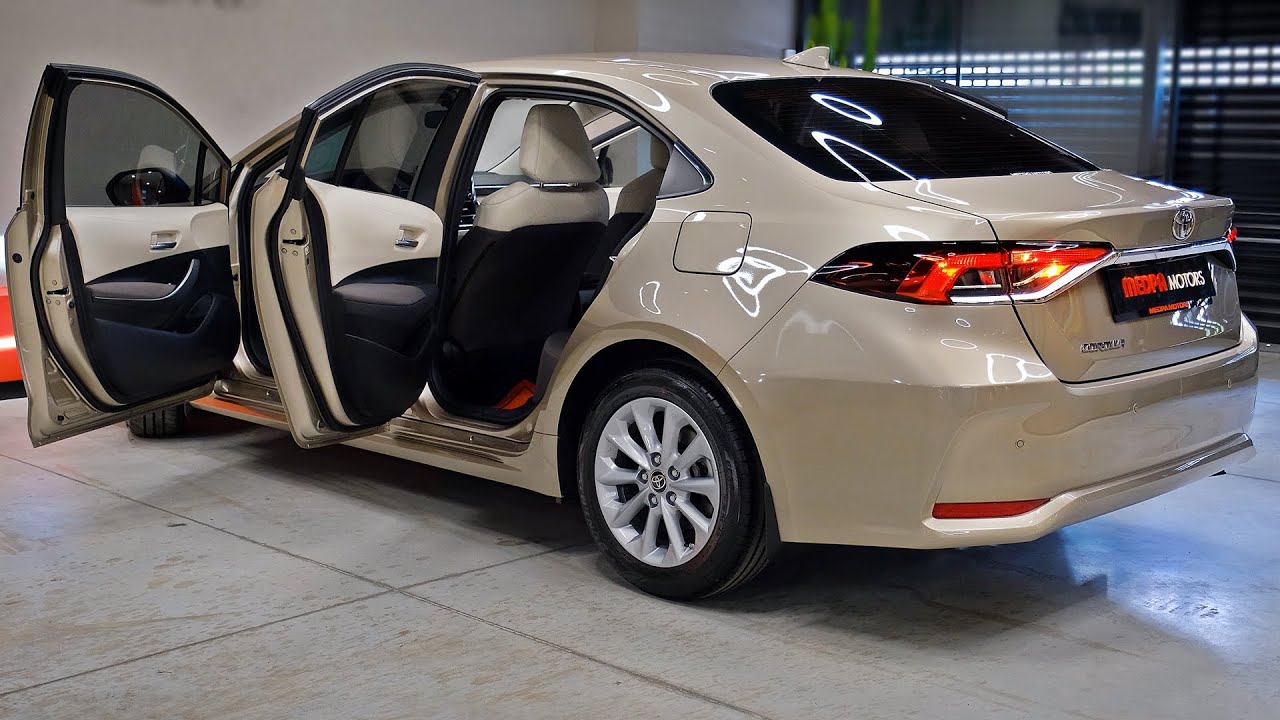
This design saves owners considerable time, typically letting them complete the job in less than 10 minutes. No tools beyond gloves and a new bulb are needed, and the electrical connectors are designed to minimize risk of damage during handling.
The Corolla’s layout also avoids tight engine bay spaces around the headlight, so there is ample room for hand maneuvering.
Overall, the Corolla’s headlight bulb replacement process reflects Toyota’s focus on user-friendly maintenance. For owners, this means less downtime and the ability to maintain safe nighttime visibility with minimal fuss.
2. Honda Civic (2018–2022)
The Honda Civic, especially the tenth-generation models from 2018 through 2022, is another vehicle renowned for its straightforward headlight bulb replacement process. Honda engineers designed the headlight assembly with easy accessibility in mind, allowing owners to change bulbs without removing any surrounding components.
To replace the headlight bulb on these Civics, you simply open the hood and locate the rear cover of the headlight housing. This cover is typically a rubber or plastic cap that can be pulled off by hand, revealing the bulb socket. The socket itself often has a twist-and-release mechanism that detaches the bulb without the need for tools.

The engine bay layout around the headlight is spacious enough to comfortably reach the bulb socket without removing the battery or air filter box, which can complicate the process in other vehicles.
This generous space combined with clear, uncomplicated access means the bulb swap can be done in under 10 minutes by someone with basic car knowledge.
Moreover, Honda’s design includes a secure connector for the electrical wiring, preventing accidental damage or disconnection during the bulb change.
The Civic’s bulbs are also positioned at a height that avoids awkward bending or stretching, making the job ergonomically easier.
For DIYers or drivers who prefer to avoid dealership or mechanic visits for simple maintenance, the Civic offers a hassle-free solution.
The combination of accessible design and minimal disassembly needs makes it one of the easiest compact cars on the market to service when a headlight bulb goes out.
3. Ford F-150 (2015–2020)
The Ford F-150, America’s best-selling pickup truck for many years, is known for its ruggedness and practical design. The headlight bulb replacement process in the 2015 to 2020 models is surprisingly simple given the truck’s large size and complexity.
On these F-150s, the bulbs can be accessed by opening the hood and removing a rubber dust cover at the back of the headlight assembly. This cover is held on with clips or a simple twist-lock that can be released without tools. The bulb socket then comes free with a turn-and-pull motion.
Unlike many trucks or SUVs that require bumper removal or extensive disassembly, the F-150 provides enough room in the engine bay to maneuver hands and bulbs comfortably. The headlight assembly is positioned near the front edge of the engine bay, making access easier than on many other vehicles.
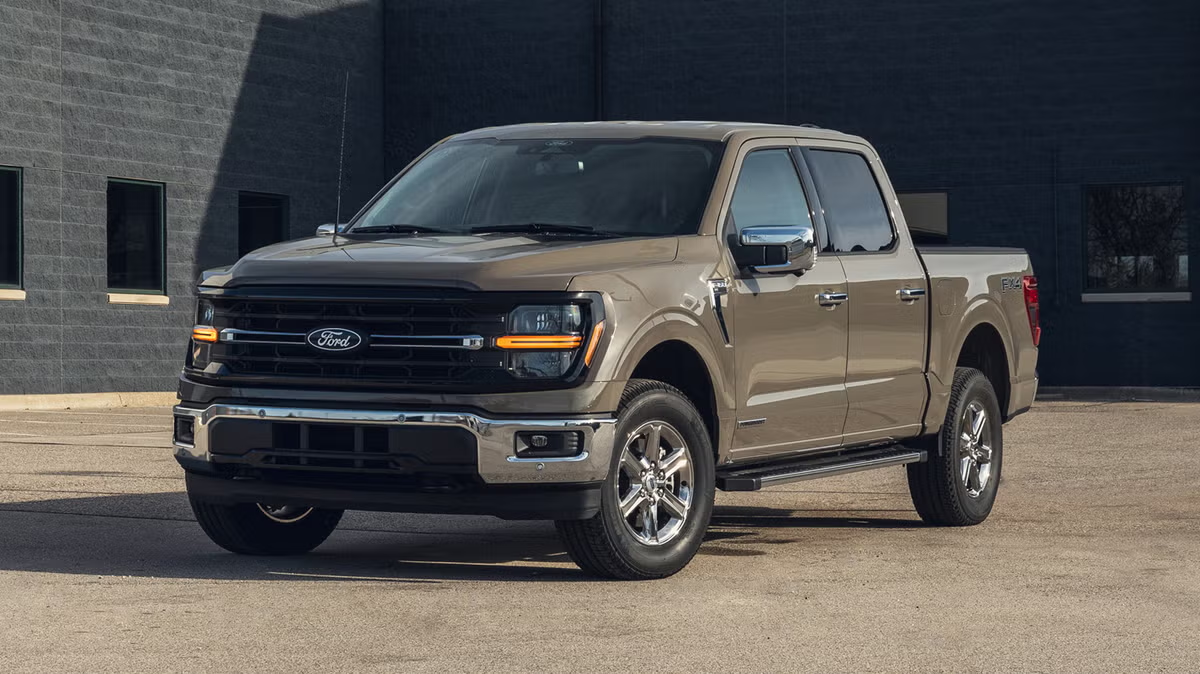
This design means that owners can replace headlight bulbs quickly, often within 15 minutes, with no special tools beyond gloves and a replacement bulb. The electrical connectors are also designed with durability and ease of use in mind, reducing the risk of damaging wiring during installation.
For pickup truck owners who often value durability and ease of upkeep, the Ford F-150’s simple bulb replacement process is a welcome feature, especially for those who like to maintain their trucks themselves.
4. Subaru Outback (2020–Present)
The Subaru Outback, particularly from the 2020 model year onward, combines rugged versatility with surprisingly accessible headlight maintenance. Subaru’s design ensures that headlight bulb replacement can be handled without removing major components or requiring complex disassembly.
To access the bulbs, owners open the hood and locate the rubber or plastic dust cover on the back of the headlight housing. This cover is easy to remove by hand and reveals the bulb socket, which can be unlocked with a twist or clip release.
What makes the Outback especially user-friendly is the spacious engine bay around the headlights, a design choice that accommodates both maintenance and repair.
There is ample room to reach the bulb socket and electrical connectors without needing to remove the battery, air intake, or other parts that commonly obstruct access in other vehicles.
This layout lets owners replace the bulbs in under 15 minutes, making it practical for a quick DIY fix. Subaru also uses secure connectors designed to resist corrosion and damage, which means fewer problems during bulb swaps.

The Outback’s easy bulb replacement system reflects Subaru’s commitment to blending rugged utility with practical ownership—especially valuable for drivers who often venture off-road but still want simple maintenance.
5. Mazda CX-5 (2017–2021)
The Mazda CX-5, known for its sleek design and driving dynamics, also excels in maintenance accessibility. Models from 2017 through 2021 feature a headlight assembly designed for straightforward bulb replacement.
Replacing bulbs on these CX-5s involves opening the hood and removing a rubber or plastic rear cover on the headlight housing, which can be done by hand. This exposes the bulb socket, which is released with a simple twist or clip mechanism.
Mazda’s design avoids the need to remove the battery or air intake box for headlight access, unlike many competitors.
The engine bay design gives plenty of room to reach the bulb socket comfortably. The connectors are built with durability in mind, allowing a smooth disconnect and reconnect process without damaging wires or clips.
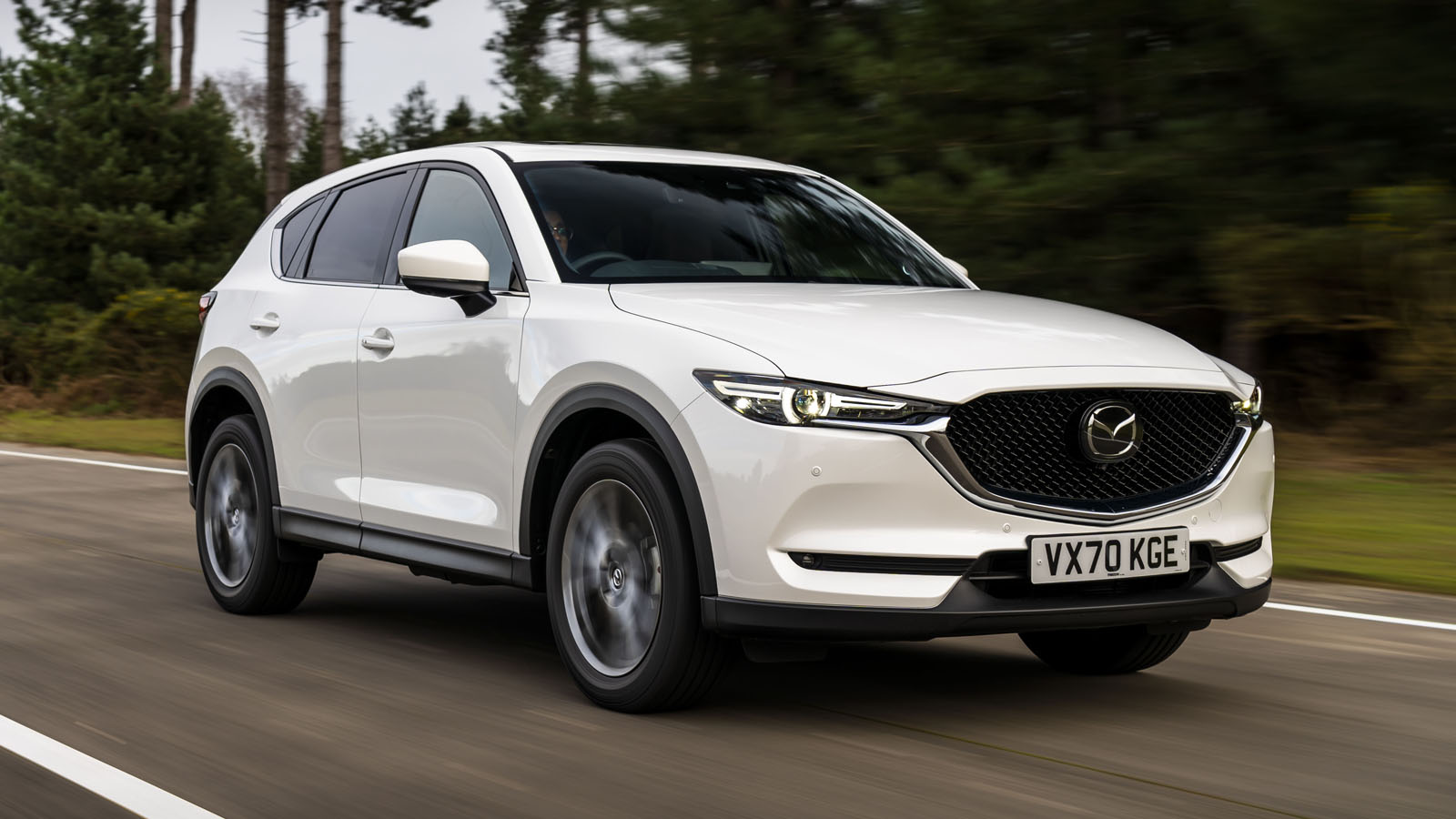
Thanks to this thoughtful design, changing a headlight bulb on the CX-5 typically takes under 10 minutes, making it one of the most user-friendly compact SUVs in this regard.
For owners who prioritize both style and ease of maintenance, the Mazda CX-5 offers a perfect balance—ensuring safety is easy to maintain without costly mechanic visits.
5 Headlight Bulbs That Require Disassembly
While many vehicles today emphasize ease of maintenance, some models still have headlight designs that make bulb replacement more involved and time-consuming.
In these cars, gaining access to the headlight bulb means removing other parts—sometimes bumpers, air intake boxes, or inner fender liners—to reach the back of the headlight assembly.
This extra step can turn a simple bulb swap into a half-hour (or longer) project, often discouraging owners from DIY repairs and pushing them toward professional help.
Why does this happen? Manufacturers may prioritize other design factors—such as tighter engine bays, aerodynamic styling, or compact packaging—that limit direct access to headlight bulbs.
In other cases, the complexity of advanced lighting systems or integrated daytime running lights can complicate removal and replacement procedures.
Understanding which vehicles require disassembly before you can change a headlight bulb helps set realistic expectations for maintenance.
These designs are not necessarily bad; they often reflect compromises made to meet styling, safety, or space-saving goals. However, they can increase labor time and cost when bulbs need replacement.
In this section, we explore five vehicles where headlight bulb replacement is noticeably more complex. We’ll examine what parts need removal, why access is restricted, and how much time and effort owners should plan for when servicing headlights on these cars.
If you own one of these vehicles, or are considering buying, this information will prepare you for the extra steps involved in keeping your headlights bright and functioning properly.
1. Volkswagen Golf (2017–2020)
The Volkswagen Golf, particularly in its seventh-generation models from 2017 through 2020, is well-regarded for its solid build quality and European styling.
However, when it comes to replacing headlight bulbs, the Golf poses a more complicated challenge compared to many other compact cars. This difficulty largely stems from its tightly packed engine bay and the positioning of key components around the headlight assembly.
Unlike vehicles with quick-access rear headlight covers, the Golf requires partial disassembly to reach the headlight bulbs, especially the low-beam ones.
In most cases, owners must remove or loosen the front bumper or at least parts of the inner fender liners to gain the necessary clearance. The compact design of the engine bay and the aerodynamic contours of the front end limit direct access to the rear of the headlight housing.
The process usually begins with lifting the front end, removing screws and clips securing the bumper, and carefully pulling it away from the vehicle frame. This exposes the back of the headlights, allowing bulb replacement.
The entire procedure requires patience and care to avoid damaging paint or trim components. Additionally, some versions of the Golf use xenon or LED headlights, which come with extra electronics and may need special care or professional attention during bulb replacement.
For the average car owner, this means that changing a simple headlight bulb can take 30 minutes or more, and often requires tools like screwdrivers, plastic pry tools, and sometimes a socket wrench. It’s not a straightforward plug-and-play task, and without experience, it’s easy to cause unintended damage.
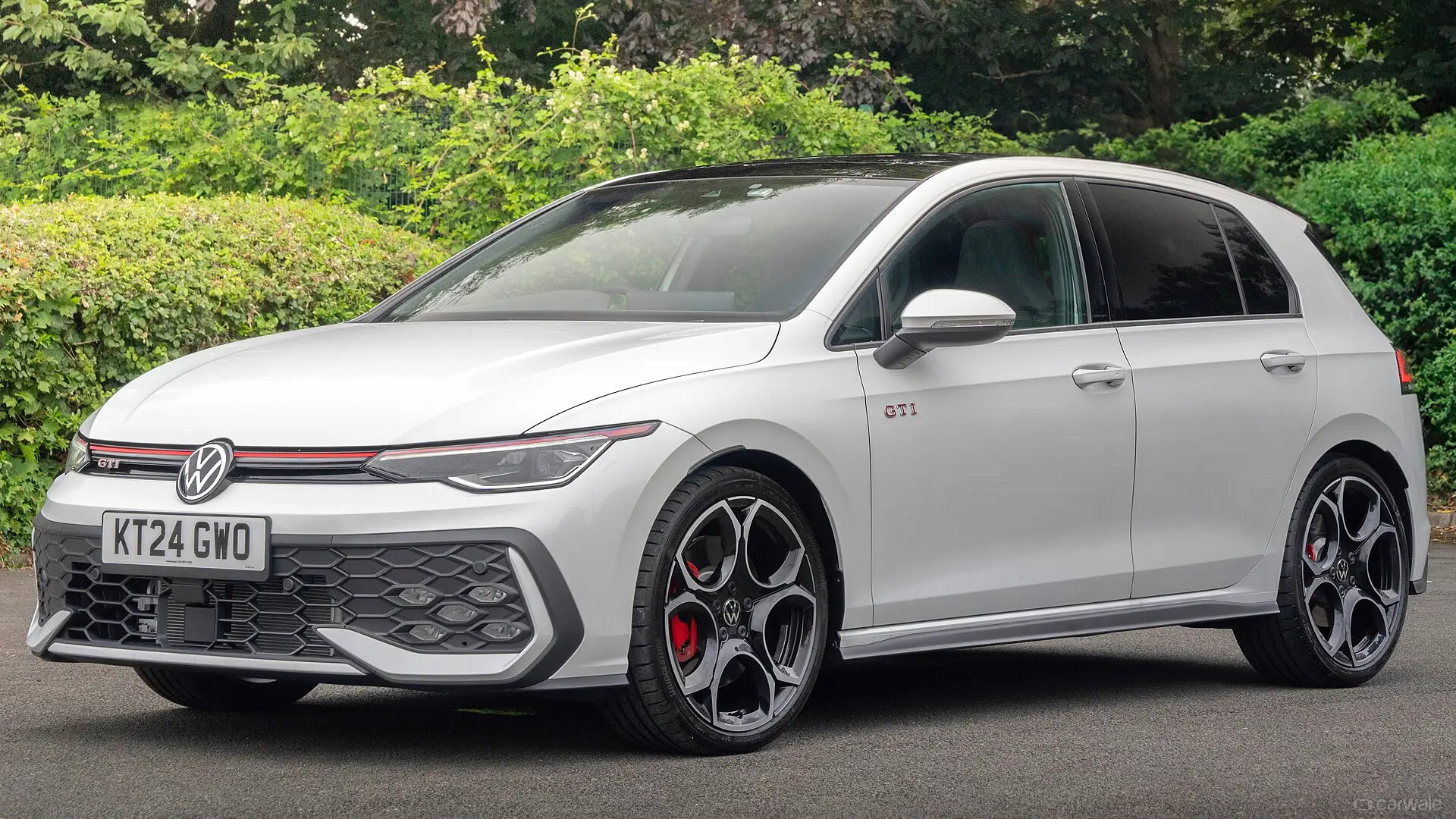
This complexity often leads many Golf owners to seek professional service rather than attempt the replacement themselves. While Volkswagen’s design maximizes the vehicle’s compact and sleek exterior, it sacrifices ease of maintenance in the headlight department.
If you own a Golf from this generation, expect a more involved process to keep your headlights shining brightly, and plan accordingly when your bulbs eventually burn out.
2. BMW 3 Series (F30, 2012–2019)
The BMW 3 Series, specifically the F30 generation produced from 2012 to 2019, is celebrated for its dynamic driving experience and luxury features.
However, when it comes to routine maintenance tasks like headlight bulb replacement, the F30 presents a notable challenge that many owners and DIY enthusiasts find frustrating.
Unlike simpler setups, replacing bulbs on the F30 often involves disassembly of components that are not immediately intuitive or easily accessible.
The tight packaging of the engine bay combined with BMW’s sleek headlight design means that access to the bulbs—especially the low beams—requires removing or at least loosening the front bumper cover.
This is partly due to the integration of the headlight assembly with aerodynamic styling elements and the incorporation of advanced lighting technologies, such as adaptive headlights and xenon bulbs.
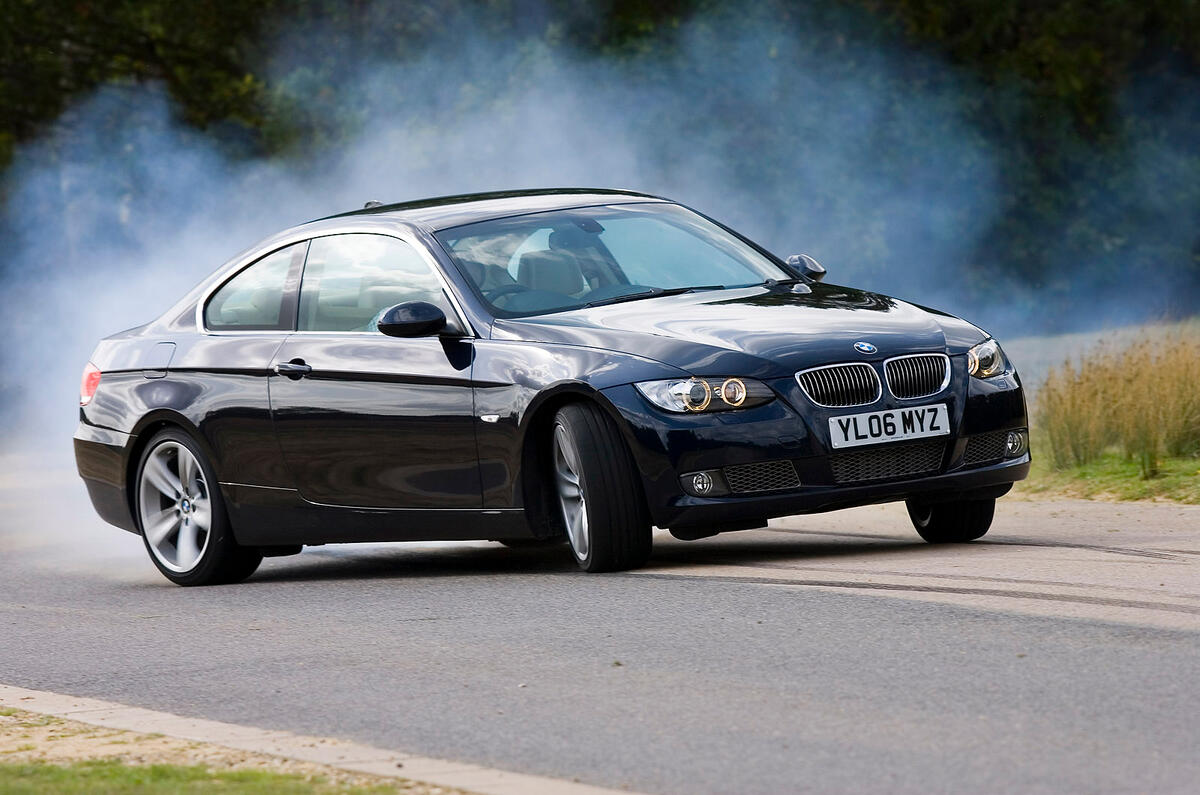
To reach the bulbs, you typically need to start by raising the vehicle or turning the front wheels to the side for better access to the inner fender liner.
The process involves removing screws and clips that secure the bumper and sometimes unfastening the wheel well liner. Once the bumper is loosened or removed, you gain direct access to the headlight assembly’s rear.
The bulbs themselves might be easier to unplug and replace once the headlight is accessible, but the preparatory disassembly extends the time and effort required.
Additionally, because of the electrical complexity and sensitivity of BMW’s lighting systems, caution is necessary to avoid damaging wiring, sensors, or connectors.
Many BMW owners find the process time-consuming—often taking 30 to 60 minutes or more—and occasionally requiring special tools such as trim removal tools and a ratchet set.
For those unfamiliar with vehicle disassembly, the risk of cracking bumper tabs or scratching painted surfaces is significant, which leads many to prefer professional service.
This complex replacement procedure reflects BMW’s prioritization of aesthetics and technology over simple maintenance accessibility.
Owners of the F30 3 Series should be prepared for this extra step when their headlights need servicing, and consider the added time and cost implications when budgeting for routine upkeep.
3. Audi A4 (B9, 2016–2022)
The Audi A4 B9 generation, produced between 2016 and 2022, is known for its refined styling, cutting-edge technology, and a premium interior.
However, when it comes to replacing headlight bulbs, the A4 is not as straightforward as many other vehicles. Audi’s design prioritizes sleekness and compactness, which unfortunately comes at the cost of easier access to headlight components.
On the B9 A4, the headlight assemblies are integrated tightly into the front fascia with minimal gaps. The engine bay layout is compact, leaving very little space behind the headlights.
As a result, replacing bulbs—especially the low beams—requires partial disassembly of surrounding components, including the removal of the front bumper or at least the loosening of clips and screws securing the bumper cover.
The process typically starts by lifting the front end of the car safely and removing the wheel well liners to access the bumper fasteners from the sides.
Next, bolts and plastic clips around the bumper’s lower edge and wheel arches need to be undone. Only then can the bumper be carefully pulled away, exposing the headlight assembly’s backside.
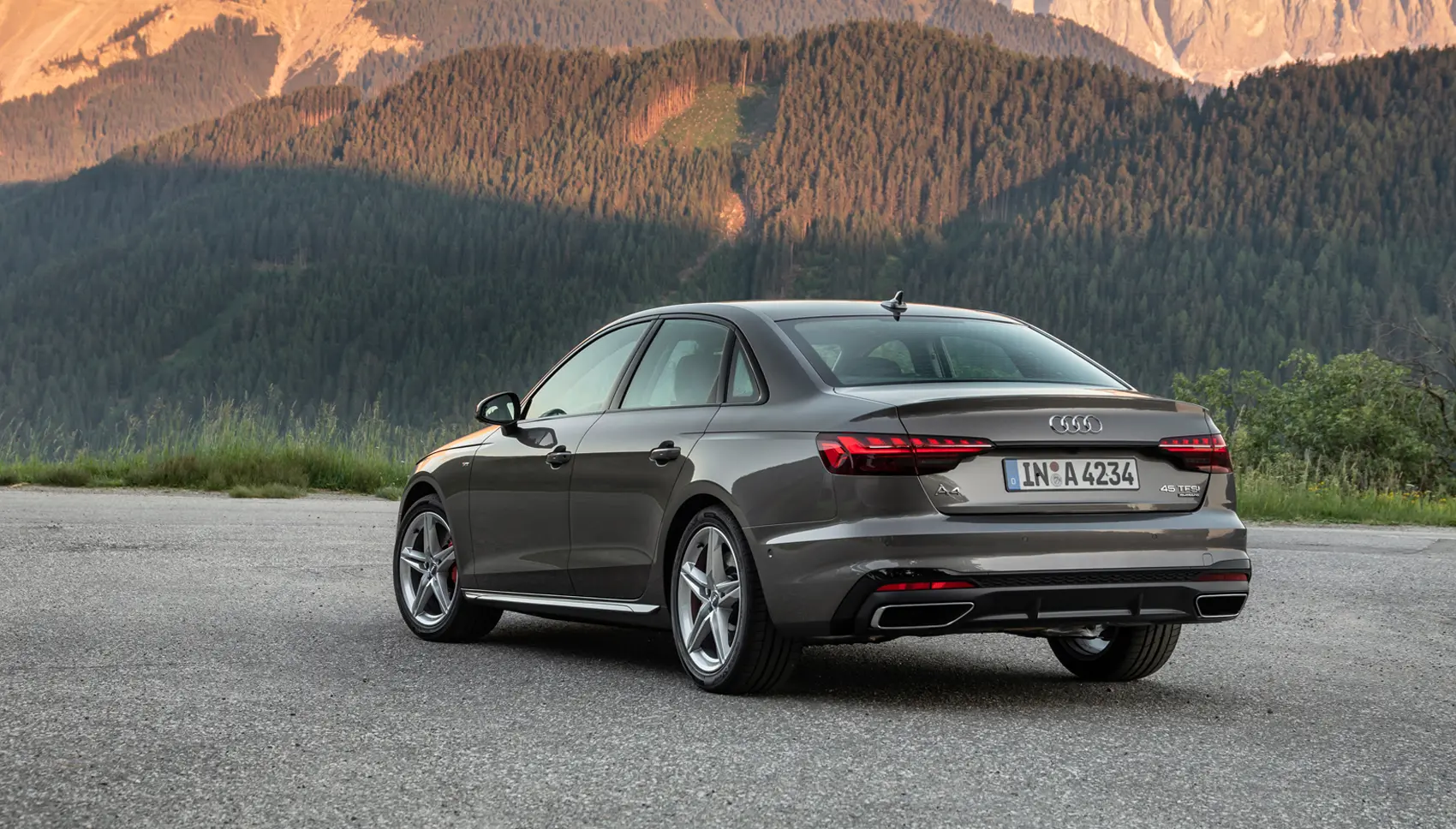
Once the bumper is off or loosened sufficiently, the bulb covers can be removed, and the bulbs swapped out. Despite the bulb itself being a simple plug-and-play component, the steps leading up to accessing it significantly increase labor time and complexity.
Additionally, many Audi A4 models come with xenon or LED lighting systems, which may require careful handling or specific replacement parts that are more costly than standard bulbs. There’s also the potential risk of damaging sensitive wiring harnesses or sensors if the disassembly isn’t done cautiously.
For the average owner, this means replacing headlight bulbs can easily take 30 to 45 minutes or longer and may necessitate specialized tools like plastic pry tools, ratchets, and torque wrenches.
Overall, the Audi A4 B9 exemplifies how a premium, tightly packaged vehicle design can complicate seemingly simple maintenance tasks, requiring owners to prepare for a more involved headlight bulb replacement process or to seek professional service.
4. Mercedes-Benz C-Class (W205, 2015–2021)
The Mercedes-Benz C-Class W205 generation, spanning model years 2015 to 2021, combines luxury, performance, and advanced technology. However, one trade-off of its sophisticated design is that replacing the headlight bulbs can be notably cumbersome.
Unlike vehicles where you can simply access the bulbs from behind the headlight housing, the W205 often requires partial disassembly, which adds significant time and effort to what should be a straightforward maintenance task.
The core reason is the tight packaging of the engine bay and the integration of the headlight assembly with the car’s aerodynamic styling.
To reach the bulbs, particularly the low beam or xenon units, you often have to remove or at least loosen the front bumper. Additionally, the inner fender liners may need to be removed or repositioned to gain access to bumper fasteners and clips.
The process typically begins with raising the front of the vehicle on ramps or a lift to gain better access. The wheel wells need to be cleared by removing plastic liners that shield the bumper from debris.
After unfastening numerous screws and plastic clips securing the bumper—some of which are hidden behind the fender liners—the bumper can be carefully pulled forward. This reveals the back of the headlight assembly and exposes the bulbs.
Replacing the bulbs themselves is relatively simple once the assembly is accessible, but the disassembly and reassembly can take between 30 to 60 minutes, depending on the experience of the person performing the work.
Because Mercedes uses high-intensity discharge (HID) or LED bulbs on many C-Class models, extra care is needed to avoid damage to these sensitive and expensive components.

Owners unfamiliar with the process might risk damaging delicate bumper tabs or scratching painted surfaces, so many opt for professional service, which can add to maintenance costs.
In summary, the Mercedes-Benz C-Class W205’s headlight bulb replacement is a good example of how premium vehicle designs, while visually stunning and technologically advanced, often require more labor-intensive upkeep, especially for seemingly simple tasks like changing a bulb.
5. Tesla Model 3 (2017–Present)
The Tesla Model 3, since its launch in 2017, has revolutionized the electric vehicle market with its minimalist design and advanced technology.
However, when it comes to something as seemingly simple as replacing a headlight bulb, the Model 3 presents a surprisingly complex challenge that reflects Tesla’s unique engineering choices.
Unlike many conventional vehicles where bulbs are accessible by removing a cover behind the headlight assembly, the Model 3 requires partial disassembly of the front bumper to access the headlight bulbs. Tesla’s design focuses heavily on aerodynamics and sleek, seamless styling, which results in very tight packaging of components within the front end.
To replace a headlight bulb on the Model 3, owners or technicians must first remove the front bumper cover. This involves undoing several clips, screws, and fasteners that hold the bumper securely in place.
The process is delicate because the bumper and associated components are designed for a flush fit, and improper removal can cause cracking or misalignment.
Once the bumper is removed, access to the headlight housing becomes possible. From there, the bulb socket can be reached and the bulb replaced.
However, Tesla often uses LED lighting modules rather than traditional bulbs, which may require swapping the entire headlight assembly or specialized parts, further complicating the process.

Additionally, the electrical connectors in the Model 3’s lighting system are more complex and sensitive compared to standard vehicles, increasing the risk of damage during DIY repairs.
For the average owner, the headlight bulb replacement process on the Tesla Model 3 can easily extend beyond 30 minutes and demands careful attention and proper tools, such as trim removal kits and torque wrenches.
Many owners opt to have this work done by Tesla service centers or experienced professionals to avoid potential damage.
In conclusion, the Tesla Model 3 exemplifies the trade-offs between futuristic vehicle design and maintenance accessibility.
While its sleek front end and integrated systems contribute to efficiency and style, they also create a more involved and time-consuming process for replacing headlight bulbs.
Headlight bulb replacement is one of the most common and essential maintenance tasks vehicle owners face.
The ease or difficulty of this job varies widely across different makes and models, influenced largely by design priorities such as engine bay packaging, styling, and lighting technology.
In this article, we explored two contrasting categories: vehicles where bulbs can be changed in minutes with minimal hassle, and those where replacing a simple bulb demands partial disassembly of the front bumper or other components.
For cars with easily accessible bulbs, the design emphasizes practicality and owner-friendly maintenance. Simple rear covers on the headlight housing or open engine compartments allow quick swaps without tools or extensive labor.
This ease saves time, lowers repair costs, and empowers owners to perform DIY maintenance confidently. These models are especially appealing for drivers who prioritize convenience and want to avoid service shop visits for basic upkeep.
On the other hand, some modern vehicles, especially luxury or performance-oriented models, prioritize sleek styling, compact design, and advanced lighting technologies.
While these features enhance aesthetics, safety, and driving experience, they often make headlight bulb replacements more involved.
Removing bumpers, fender liners, or other parts to access bulbs can add 30 minutes or more to the task and increase the chance of accidental damage during servicing. Owners of these cars need to be aware of the extra effort required or consider professional assistance.
This trade-off between design sophistication and serviceability reflects broader automotive trends. As vehicles continue to evolve with more integrated and complex systems, routine maintenance tasks can become less accessible to the average owner.
However, knowing what to expect ahead of time—whether your vehicle falls into the “quick-change” or “disassembly required” category—helps you plan accordingly.
Ultimately, understanding these differences helps owners maintain their vehicles more effectively, whether by preparing for a simple bulb swap or budgeting time and cost for a more complex replacement. Either way, keeping headlights bright and functional remains vital for safety and visibility on the road.
Also Read: 5 Cars That Sell Fast on Facebook Marketplace and 5 That Stay Listed for Months

